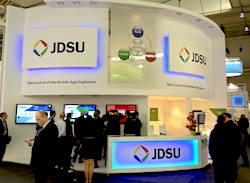Optical and test and measurement vendor JDSU has acquired location-aware mobility solutions provider Arieso for €65.3 million as it looks to expand its position in the small cells and mobile network optimisation markets.
Based in the UK, Arieso offers location-aware software solutions that enable mobile operators to boost their 2G, 3G and 4G LTE network performance and improve subscriber experience by analysing big data.
According to JDSU, the acquisition will enable the company to expand its mobility strategy by “extending visibility all the way to the subscriber location, providing critical intelligence that allows radio access network (RAN) optimisation teams to easily identify ideal locations for small cells and other self-optimising network enhancements”.
Edward Gubbins, senior analyst, Wireless Infrastructure, Current Analysis told Mobile Europe that the acquisition is well-timed as small cells deployments are expected to increase significantly in the next two years.
The RAN optimisation and self-optimised networks (SON) markets are expected to grow from €538 million today to €769 million in 2015.
“[The acquisition] gets JDSU into the market for SON, which will grow in importance as operators deploy small cells and use them to improve customer experience – for example, making sure that radio resources aren’t overtaxed in one place and wasted in another. As operators make Wi-Fi a more integrated part of their networks, that optimisation process becomes even more valuable,” he said.
According to Gubbins, the deal also gives JDSU “a strategic trajectory” to follow as infrastructure vendors look more toward software than hardware: “As networks scale, driven by rising traffic from proliferating smart mobile devices, JDSU’s current drive-test solutions could be threatened; they wouldn’t be able to scale as broadly or quickly as Arieso’s automatic software platforms.
“This deal also gives JDSU the potential to monetise the network data yielded through Arieso’s platform, through burgeoning analytics plays that vendors and operators are increasingly exploring.”



